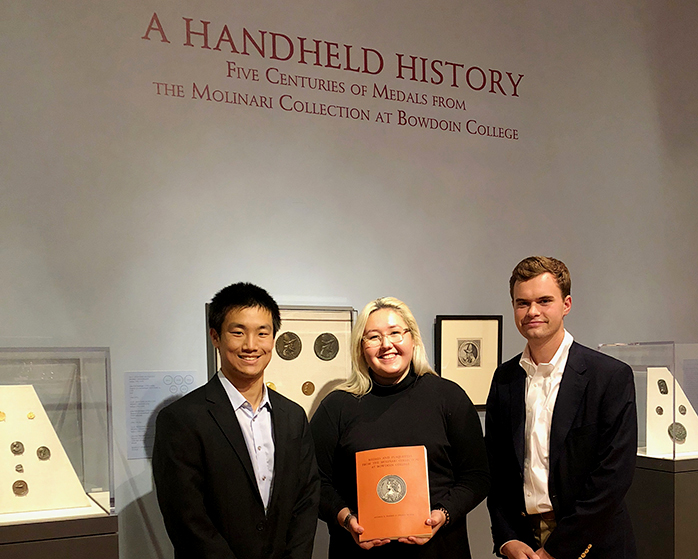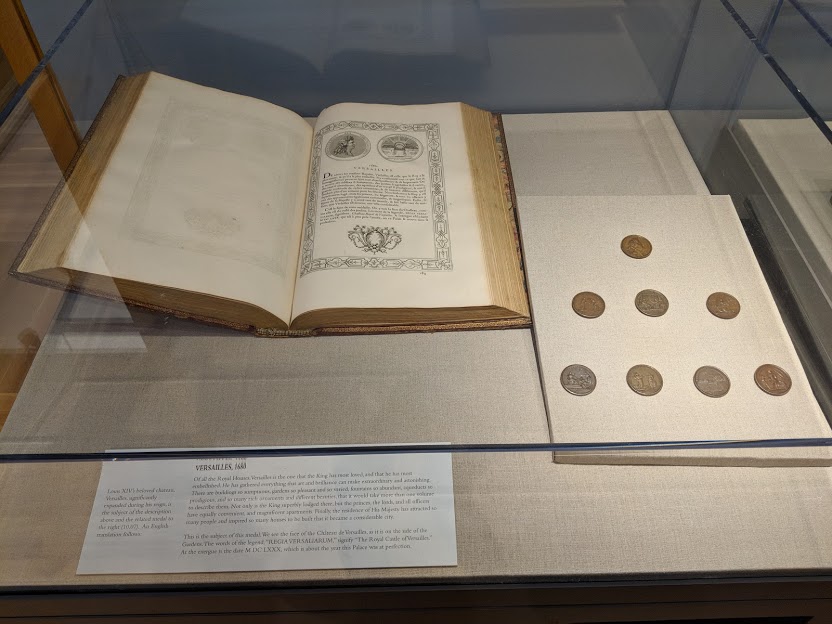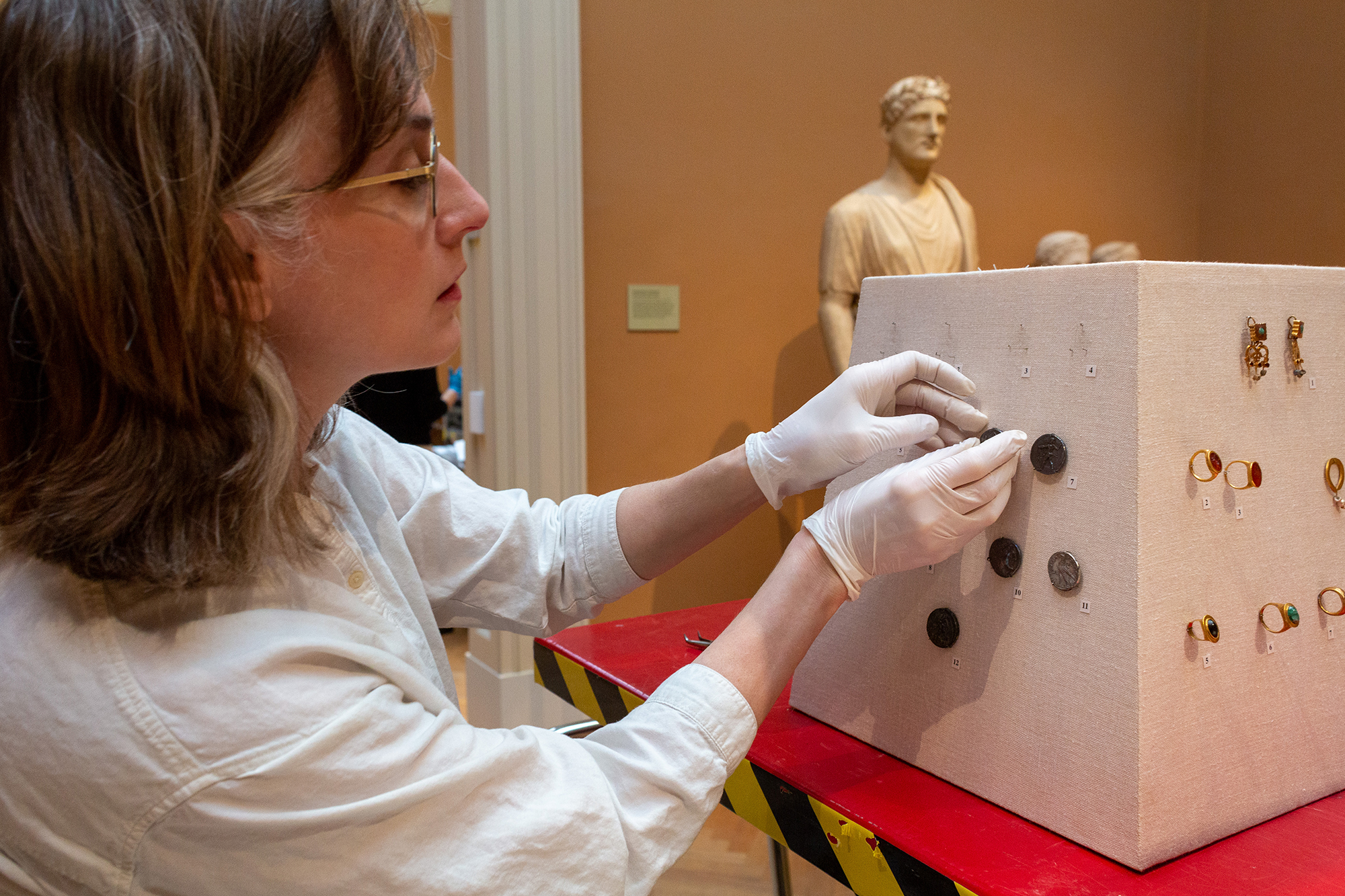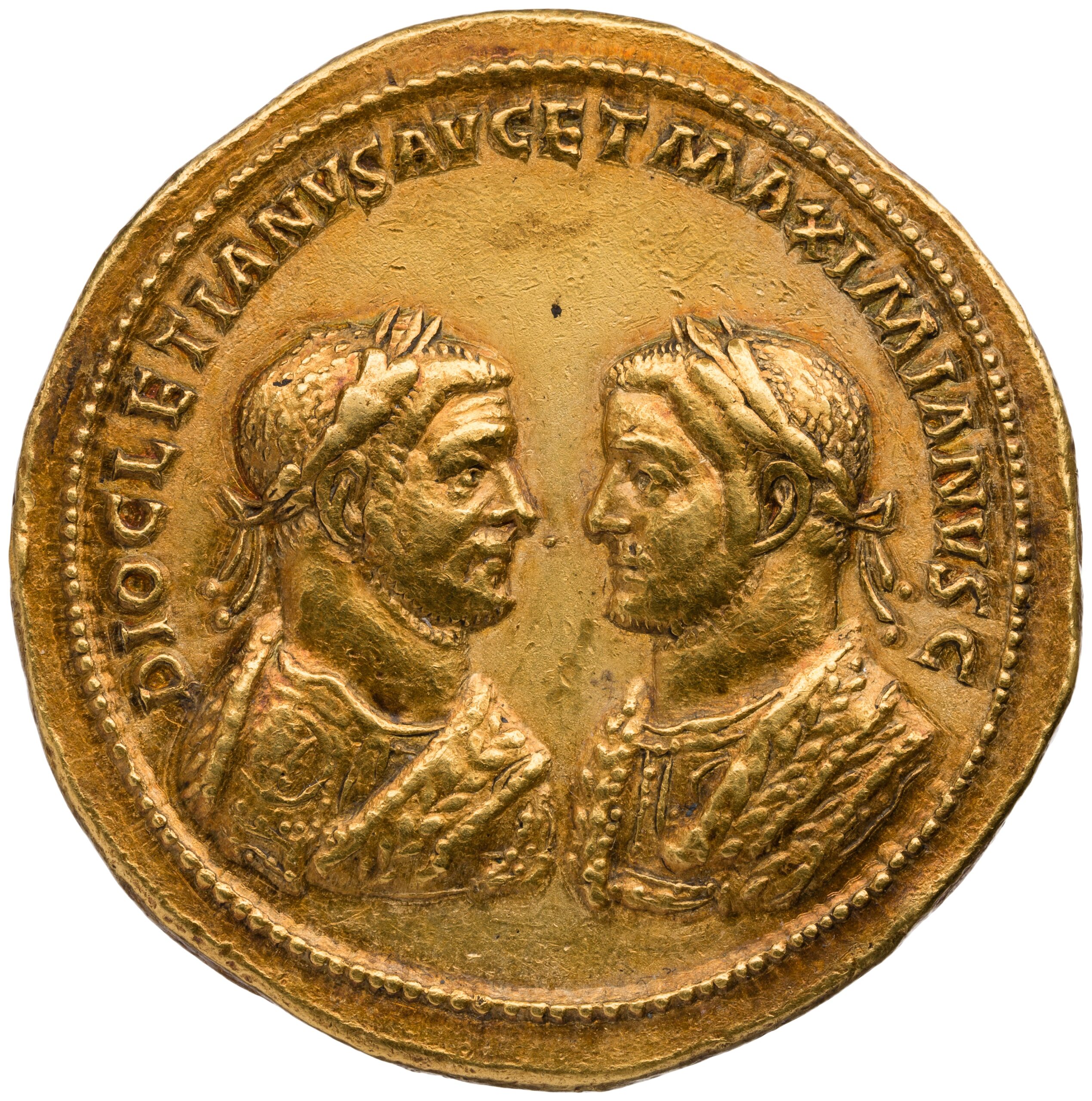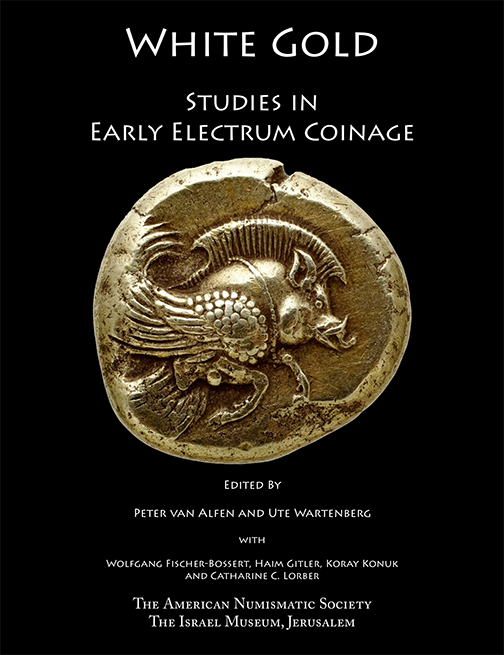“A Handheld History”—An Exhibit of Medallic Art at Bowdoin College Museum of Art
Before Thanksgiving I had the great pleasure of participating in “Holding History in the Palm of One’s Hand: Contemporary Perspectives on Medals and Coins from Antiquity to the Recent Past,” an event at the Bowdoin College Museum of Art in Brunswick, Maine, celebrating the exhibit “A Handheld History: Five Centuries of Medals from the Molinari Collection at Bowdoin College.” Three speakers, myself, Dr. Stephen K. Scher, and Prof. Susan Wegner, presented different aspects of medallic art and its history from its inception in the Italian Renaissance to the twenty-first century. We were then joined on stage by the curators of the exhibit, Amber Orosco, Stephen Pastoriza, and Benjamin Wu, for a panel discussion. Significantly, all three of the curators are currently undergraduate students at Bowdoin, which makes their achievement in curating this exhibit all the more remarkable.
In 1966, the Bowdoin College Museum of Art received from Amanda Marchesa Molinari a gift of a collection of approximately 1,500 art medals and 200 related books—including numerous rare volumes from the seventeenth through the twentieth centuries— that she and her late husband, Cesare Molinari d’Incisa, had assembled over the course of several decades. The collection is rather astonishing for the large number of important medals of the fifteenth through seventeenth centuries from Italy and Northern Europe especially, some of which, in fact, are lacking in the ANS’s collection, such as the John VIII Palaeologos medal by Pisanello. Curators at Bowdoin in the 1960s were certainly aware of the importance of this collection; a partial catalogue of the collection by Andrea Norris and Ingrid Weber was soon published and an exhibit of some of the highlights was put on display. In the decades since, however, this collection had not received the attention it rightly deserves.
In the summer of 2017, Museum Co-Director Dr. Anne Collins Goodyear and the student curators paid me a visit at the ANS and also spoke with Stephen Scher at The Frick Collection. Dr. Scher introduced them to highlights from the collection he had recently donated to the museum, then on view in the exhibition “The Pursuit of Immortality: Masterpieces from the Scher Collection of Portrait Medals.” Their purpose was to discuss the history of the medal, the Molinari collection, and their intent to put on a new exhibit of this outstanding collection. The results of their efforts, “A Handheld History,” are truly impressive. In eight cases, the exhibit not only displays some of the most important pieces from the Molinari collection, but also focuses on various aspects of medal production, metallurgical analysis in the study of medals, and the evolution of medallic art over the centuries. Two of the cases are particularly noteworthy. One includes a 1723 edition of the folio volume accompanying the Histoire Métallique documenting the reign of Louis XIV of France along with a selection of the medals illustrated in the volume; another includes a volume of Gerard van Loon’s 1732 folio Beschryving der Nederlandsche historipenningen along with medals depicting the ill-fated de Witt brothers, Johan and Cornelis. Rarely indeed are these two important early volumes exhibited side-by-side along with some of the actual medals illustrated on their pages.
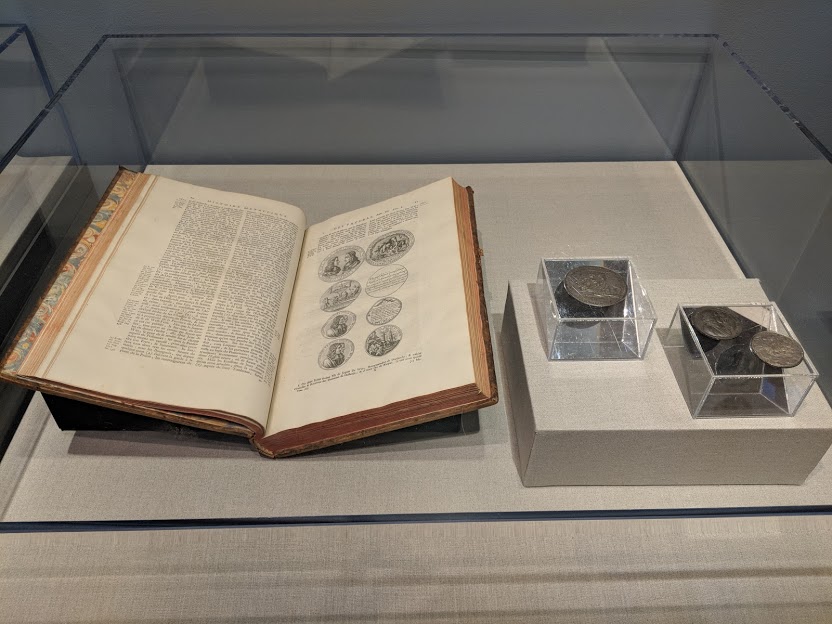
The exhibit will be on display at the Bowdoin College Museum of Art through January 20, 2019. A video of the panel discussion will be made available on the Museum’s website.


